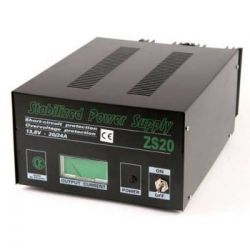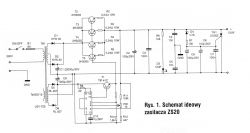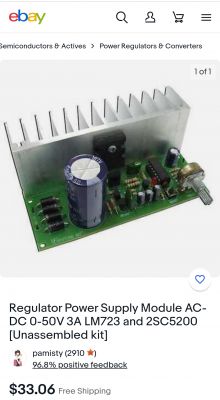AVE...
cirrostrato wrote: Urgon wrote: If I build, it's more likely to be something based on the SN1534, but with digital control and digital measurement based on 12-bit ADCs and DACs....
Tastes are not to be discussed but a 12 bit ADC to measure voltage and current in a power supply replacing a battery supply........Greetings.
What do you dislike about it? For me, the resolution of the settings and measurement to 2mV/500µA is completely sufficient. There is also no problem to use a 14-bit ADC for current measurement, which would give a resolution of 125µA, or even a 16-bit one to have a resolution of 31.25µA. I, however, would sooner use 12-bit ADCs and a programmable amplifier, because with a consumption of ~1A a resolution of up to 31.25µA is not necessary for me for anything practical. Therefore, by adding, for example, the MCP6G01 I can have a resolution of 500µA for currents up to 2.048A, 50µA up to 204.8mA and 10µA up to 4.096mA. And so the precision of this power supply will be limited by the quality and drift of the reference voltage, the errors and drifts of the operational amplifiers and the ADCs and DACs....
Back on topic, fellow
@dawid1346 does not need a 10A power supply. I would advise buying something reasonable with typical 30V/5A values, maybe even two units, or a second 15V/3A power supply. Top it off with a reasonably reasonable multimeter, like the Aneng AN870, and you'll be a mate happy.
The fundamental question is: what specifically does the colleague need the power supply for, and what does he expect from it?





